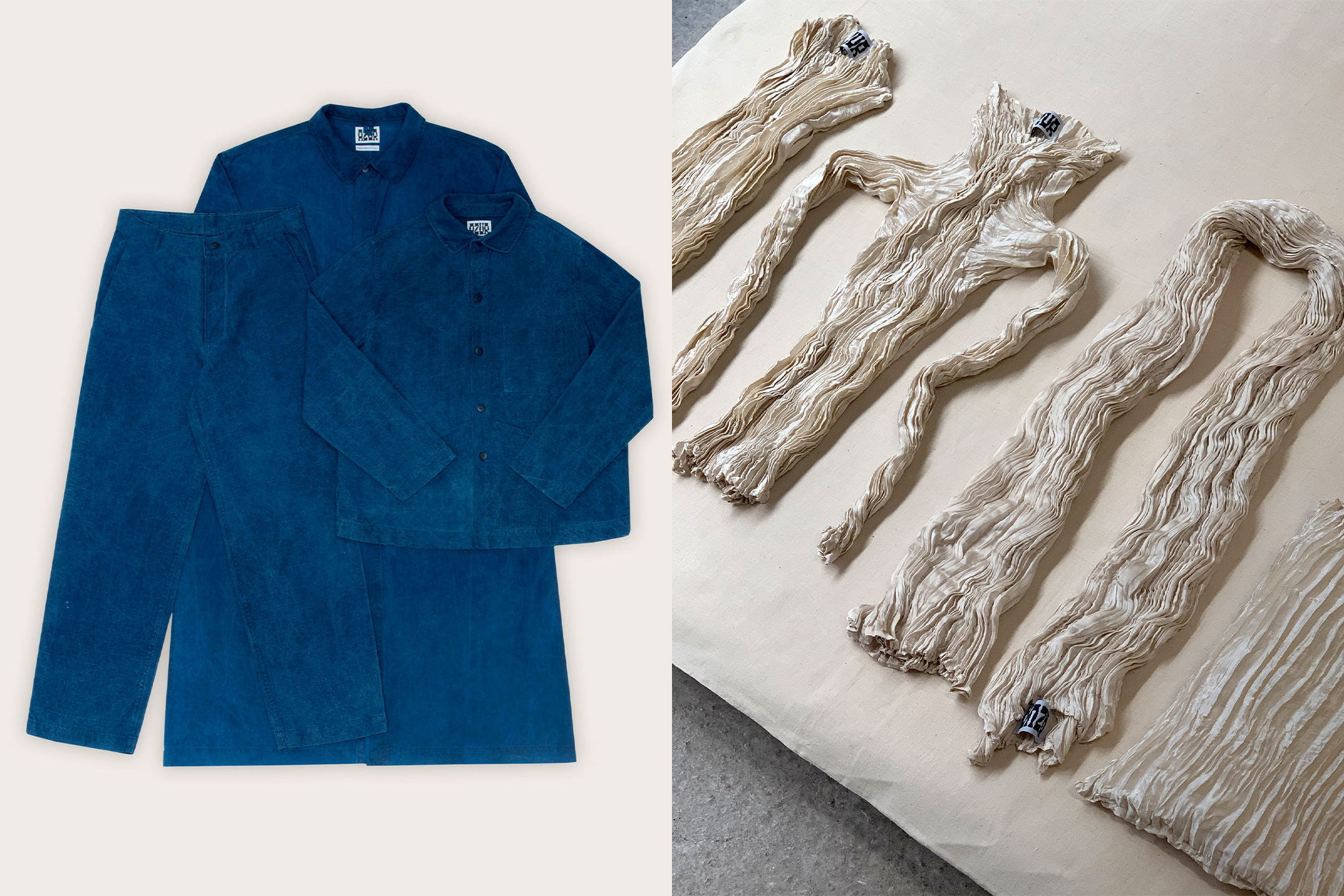
Marseille calling
A conversation about sustainable business models with Lisa Favreau from Azur.
Azur is a clothing brand based in Marseille. It was created in 2019 by two Lisa (Favreau and Guedel-Dolle). Since day one, they have had a totally sustainable and careful approach : working with antique french fabrics, natural fibers and dyes, hand-pleated silk by local craftswomen, producing in small quantities or on demand and entirely made in France. Hard to do better.
I’m meeting Lisa Favreau for coffee in Lausanne, in an October morning, to talk about sustainability in fashion, about launching a project, valorizing craftsmanship and their work process. She explains their first motivations and the reality of owning a brand, their production and selling system that are evolving. They do everything according to their intuitions, their values, to their rhythm and it makes you want to do the same.
What is your background?
I’m 31 and I come from Nantes. I studied textile design at École Duperré in Paris. After graduating, I worked as a decorator in a trend-forecasting studio and then as a freelance set designer. Then I met the other Lisa (Guedel-Dolle) through friends from Duperré and ECAL (Ecole d’Art cantonale de Lausanne). After graduating from ECAL, Lisa moved to Paris, where I lived at that moment. Slowly we talked about doing a creative project together.
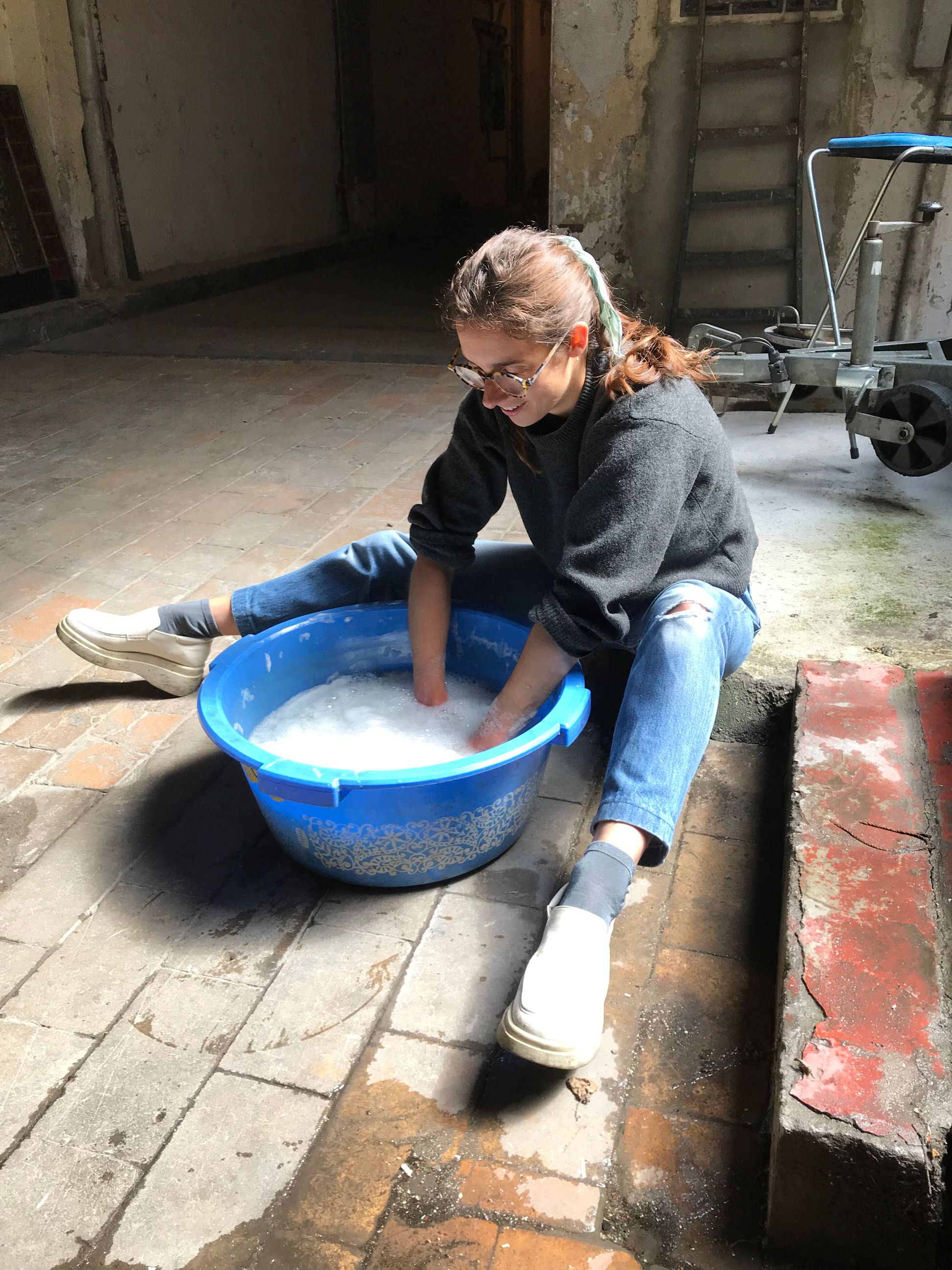
How did you decide to work together?
It came gradually. Lisa studied and worked in graphic design. What she liked about it was the idea of the object, the book. She eventually became tired and disappointed by her working environment. This is when she started thinking about changing career path and building her own project.
On my side, I liked doing set design because there is a creative and hands-on side to it. But on the other hand, I disagreed with the idea of wasting. We use and throw an enormous amount of things in set design. It felt wrong to pay so much attention to the way I was consuming in my personal life but to waste so much in my work.
We talked about that a lot together. We first thought about building two separate projects, and maybe share a studio space together but then we started wanting to do something together. We didn’t know it would be clothes at first.
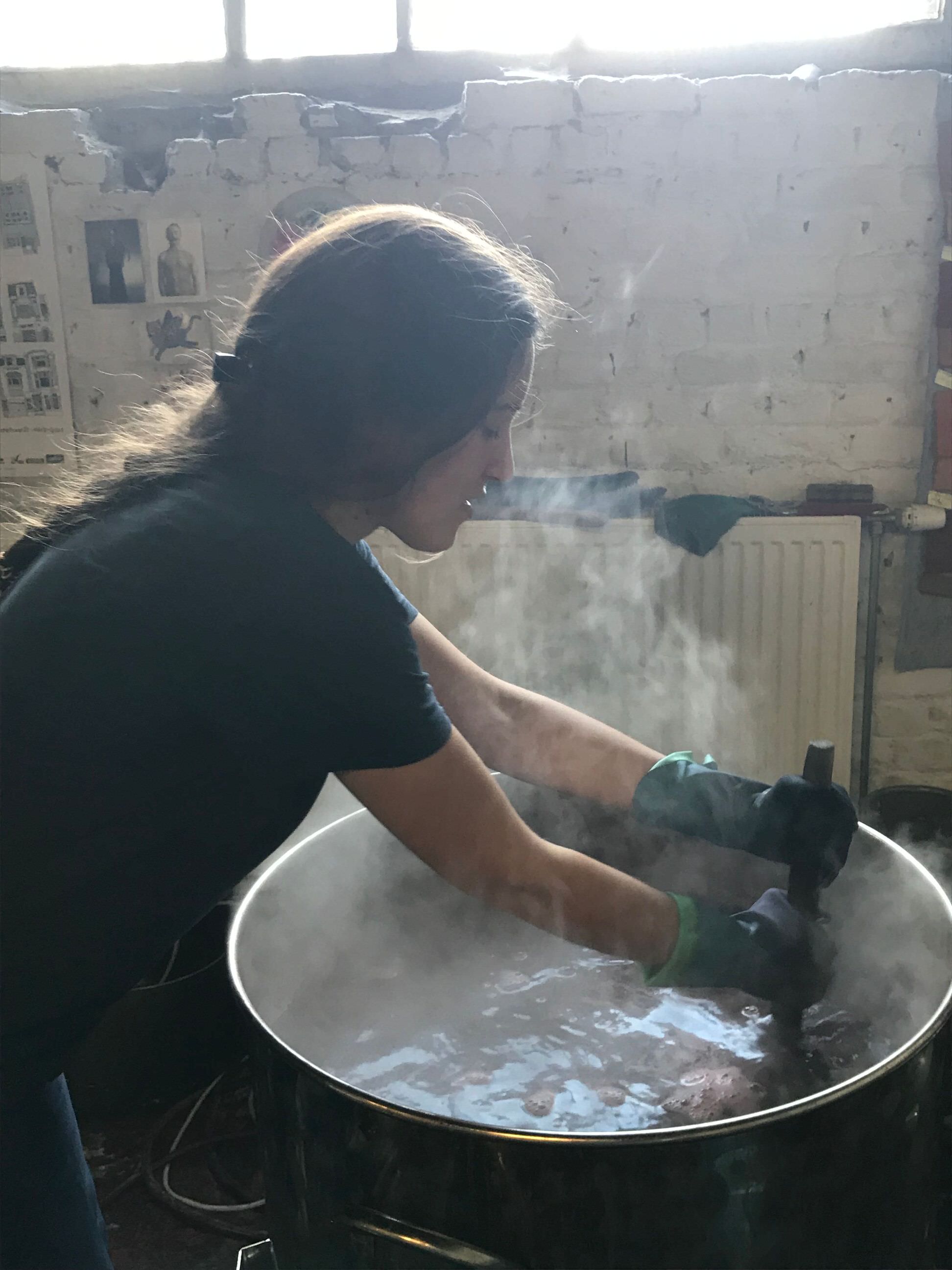
One reason for that, is that in France, knowledge and resources have been lost, textile industries have disappeared. We work on such a small scale that we can’t allow ourselves to make factories reopen. Maybe bigger brands could do that. But we do with what is there already, and when there isn’t, we simply don’t do it.
What is Azur today?
It has become a clothing brand but at the beginning, the idea was simply to create well-thought/well-made objects with as little environmental impact as possible. We even wanted them to be biodegradable. Today, Azur is a sustainable fashion brand even if those words mean everything and nothing at the same time.
I’m so impressed by your approach. It is really total. Everything is thought with care, in this idea to have the least negative impact as possible and to develop a local network.
Mathilda Tham et Kate Fletcher, two fashion researchers, have worked on linking fashion to the ethics of Care. Their Earth Logic Manifesto (2018) proposes a radical change of paradigm. A switch from a consuming/wasting scheme to the one of sustaining, repairing, restoring, to adopt a careful attitude towards the environment and the others. One of their arguments is to say that the more locally you work, with the resources that are the closest to you, the more you sustain your ecosystem (economic too) and the more you work with people around you, the more you participate in community building. This is exactly what you do in Marseille.
And sometimes I wish it could go even further, becoming something conceptual rather than commercial.
At the same time, there is a commercial reality. We need to earn money and be able to live from what we do. I think it would be harder to do more. Today it is nearly impossible. One reason for that, is that in France, knowledge and resources have been lost, textile industries have disappeared.
We work on such a small scale that we can’t allow ourselves to make factories reopen. Maybe bigger brands could do that. But we do with what is there already, and when there isn’t, we simply don’t do it. We have to review some of the goals we had set ourselves in the beginning.
The way you source your materials is also inspiring. You work mainly with natural fibers and deadstocks, isn’t it?
No, we don’t use deadstocks. It is a question we asked ourselves in the beginning.
A lot of brands use deadstocks. We had mixed feelings about it, in the sense that you stay dependent on the classical textile industry in doing so, but you get rid of your own guilt somehow. It’s good already, better than nothing, but you still rely on the classical network to exist.
So we decided not to use it because we think there are other solutions.
We wanted to work with french fabrics. Fibers that were grown, cultivated, threaded, woven in France. But we didn’t find such a complete industry, it doesn’t exist. Maybe the wool industry? But even the linen that is massively grown in France is then threaded in Poland. When you go deep into the details, you realize that a completely french textile industry doesn’t exist.
This is why we decided to look for antique textiles. Such fabrics don’t have impact anymore because they have been made such a long time ago. And it’s there already.
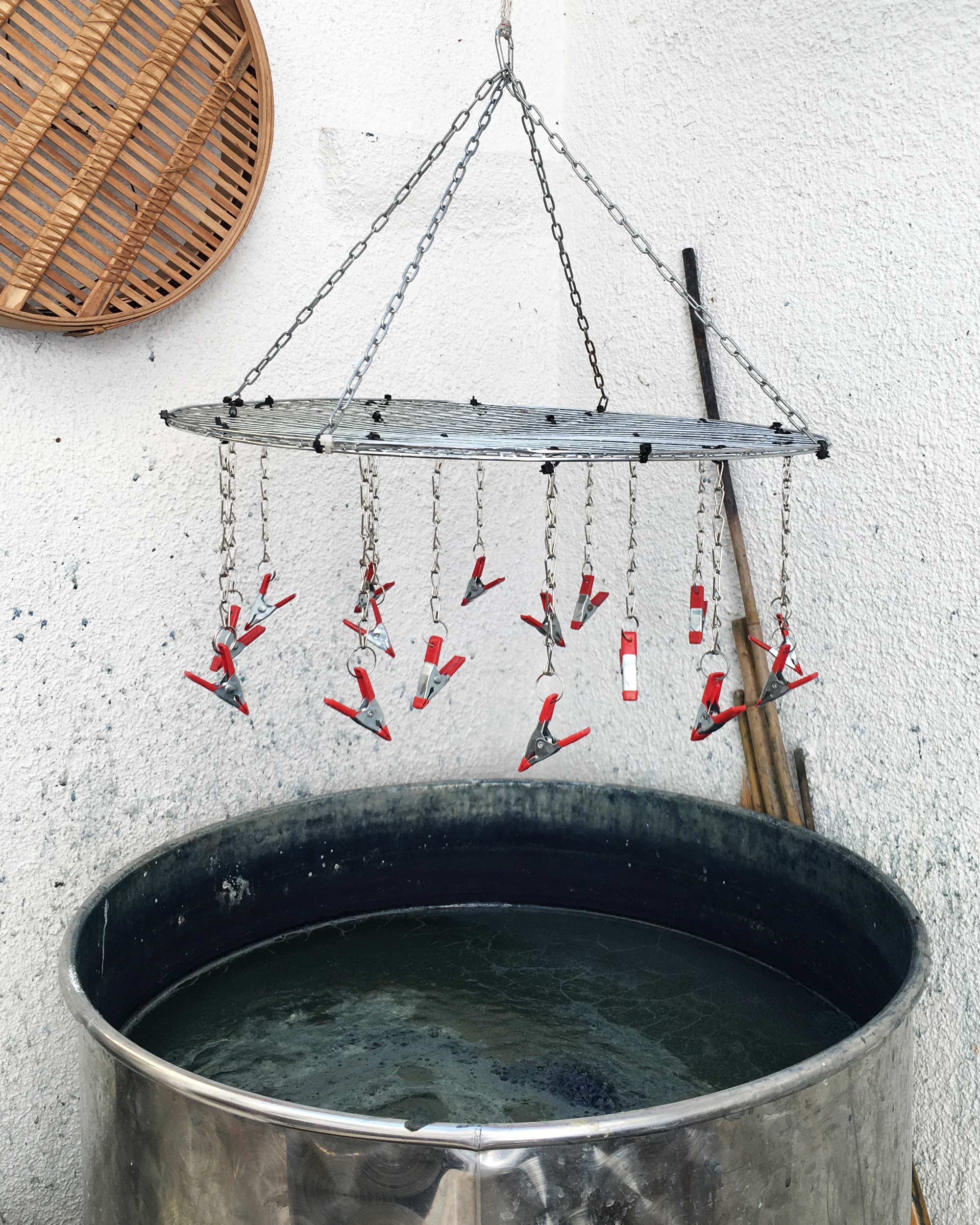
Now we focus on making simpler pieces that are adaptable to a variety of morphologies.
Where do you find antique textiles?
We bought a lot of them on « Le bon coin », to people who inherited notions stores from their uncle or aunt and have big quantities of them in their loft. Without looking for hundreds of meters, we wanted to find enough quantities to make small productions.
On top of your collections, you offer alteration and custom-made services. How do you find the time to do everything? How many are you in the team?
It’s just the two of us! But we don’t do production. We work with a seamstress for that. When we started to work with her, she worked as an independent. Two years later, she owns a little workshop with people working for her and a lot more machines.
The custom-made service is a bit complicated to put in place in reality and we are reconsidering it. We really wanted to offer that, but it was maybe a bit naive.
Of course small alterations like hems are much easier to do and we still want to offer that possibility.
Now we focus on making simpler pieces that are adaptable to a variety of morphologies. This is what we are developing with the pleated silk pieces. We also made our jackets and pants bigger so that they fit more people. We prefer working in this direction instead of making pieces that are too fitted and on top of that, offering custom-made service.
You started with a production model called « on demand ». It means that you produce on a client order. Is this still the case? Why did you choose this model? Is this logistically and financially viable?
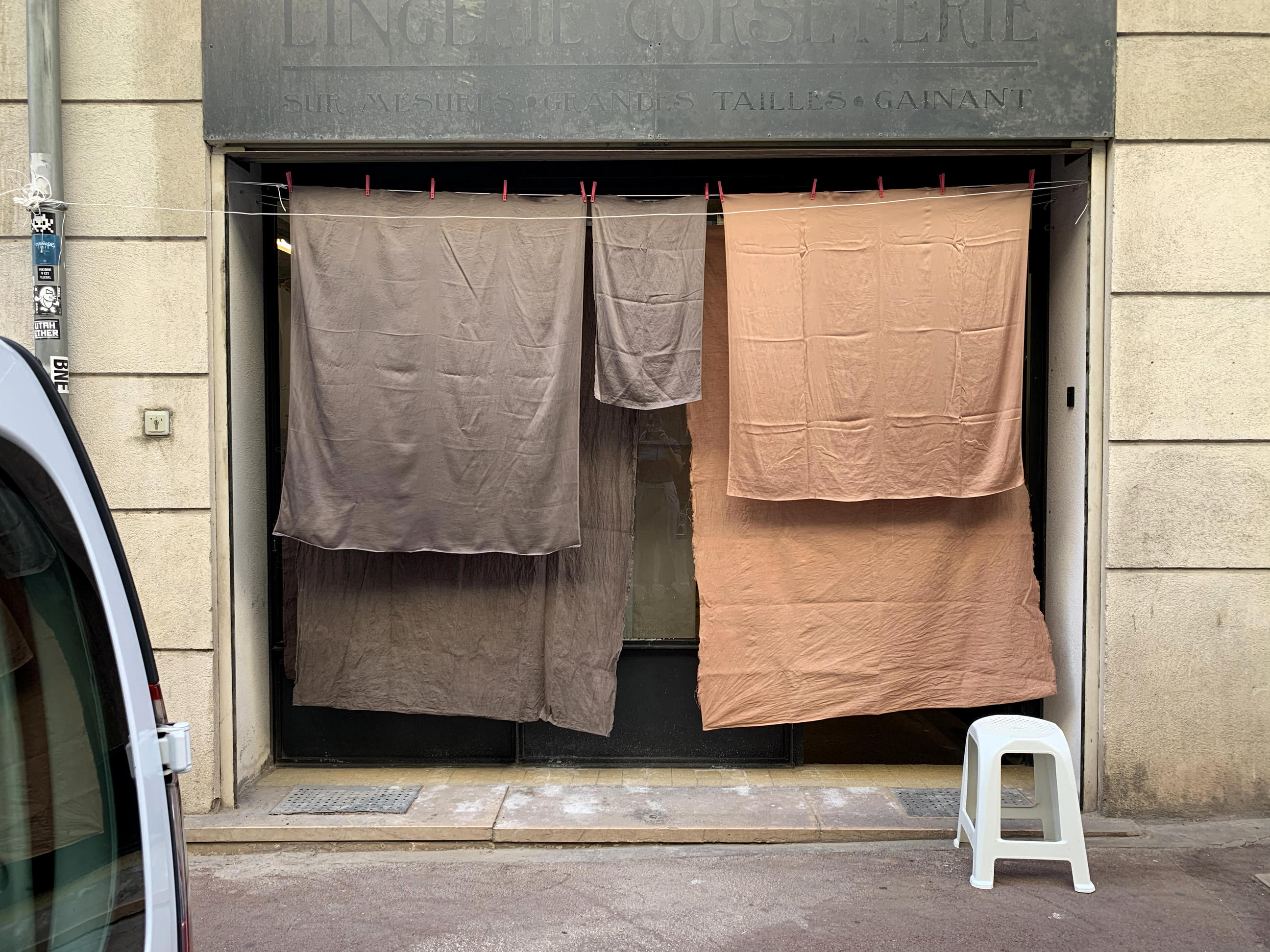
Yes it is still the case. This pre-order system is important to us. It is a business model in itself. We simply could not produce without knowing how many pieces we are going to sell. In that sense, this system is the best for us.
Until now, we functioned like this : once an order was placed, we would put everything together to produce immediately so that the customer would receive it as quickly as possible. But in our work process, there are a lot of steps, like fabric cutting and natural dying the fabrics (made by us), production (made by the seamstress), the silk pleating (made by the pleaters), packing and sending. It was a lot of going back and forth and energy spent.
Little by little, we try to put another rhythm in place. Maybe this is because we have more visibility on how many pieces we are going to sell monthly. So we book a time slot each month, dedicated to production, the first week of the month for example, where we produce all the orders of the previous month. The consequence is that it extends the waiting time for reception. An order placed in the beginning of October, will only be produced in the beginning of November.
But for us, it becomes necessary to do so, otherwise it is too much work. During those two first years, we gave a lot of ourselves and now we want to find a more stable and agreeable work pace.

Are the seamstress and pleaters close to your studio?
Everyone is in Marseille. Our seamstress works in the North. It’s a bit on the periphery and with public transportation it isn’t super accessible. This is why when we go, we gather everything we can ask her. Pleaters are in the center, maybe a ten minutes walk from our studio space.
We noticed there was a particular interest and excitement for this fabric/technique. When we lend pieces to magazines for photoshoots, they always ask us for pleated silk pieces. So we decided to focus on that, to exist a little bit more, to become more recognizable for one product. […] We want to become identifiable by pleated silk before exploring other things again.
I noticed that your pleated silk pieces are becoming your best-sellers, your specificity. Is that correct?
Yes, it’s quite recent, it dates back to this summer. We noticed there was a particular interest and excitement for this fabric/technique. When we lend pieces to magazines for photoshoots, they always ask us for pleated silk pieces. So we decided to focus on that, to exist a little bit more, to become more recognizable for one product. It doesn’t mean we want to stop doing the rest, but it’s more a strategic move. We want to become identifiable by pleated silk before exploring other things again.
There’s a magic side to pleated silk. At the beginning the pieces were off-white and then we explored natural dying it. And it works well together.
It all started by chance. We had bought a lot of fabric, including a roll of very old bio silk. It was beautiful, off-white, very delicate and precious. We asked ourselves what we could do with this wedding silk and we asked the pleaters what we could use as natural fabrics, because they mainly pleated polyester. We decided to make a top and a dress with it but it was only two pieces in the first collection, very anecdotal. Then we continued and customers liked it.

Does pleating work better on synthetic fabrics?
Yes and you can put it in the washing machine. It won’t move. The pleats stay. Natural fabrics aren’t pleated forever. The fiber is a little broken but the pleat has a tendency to reopen itself. For our pieces, it is dry cleaning only.
How did you meet the pleaters?
They are also embroiderers. At first, we had an embroidery project and my mom found them online. We met them, went to visit their workshop and we discovered their pleating activity. We asked them to show us this creased pleating technique (the one we use now) and we said wow!!
Can you tell us more about this pleat technique?
I don’t know if all the pleat workshops make that. It’s made without mold. Usually, pleating is made with big cardboards molds. They also work with that and can make a variety of patterns like big steady sun-pleats or pleats going in different directions, 3D diamond patterns. But this specific one is made without a mold. They pleat with four hands, on the entire length of the piece once it’s sewn. They have to do it at the same time, so that it will be steady.
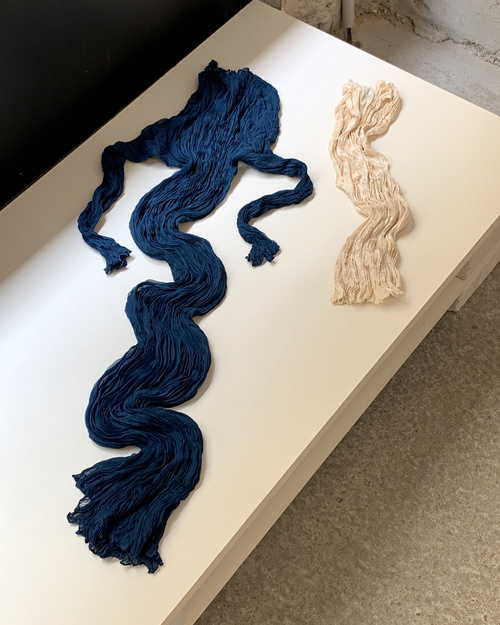

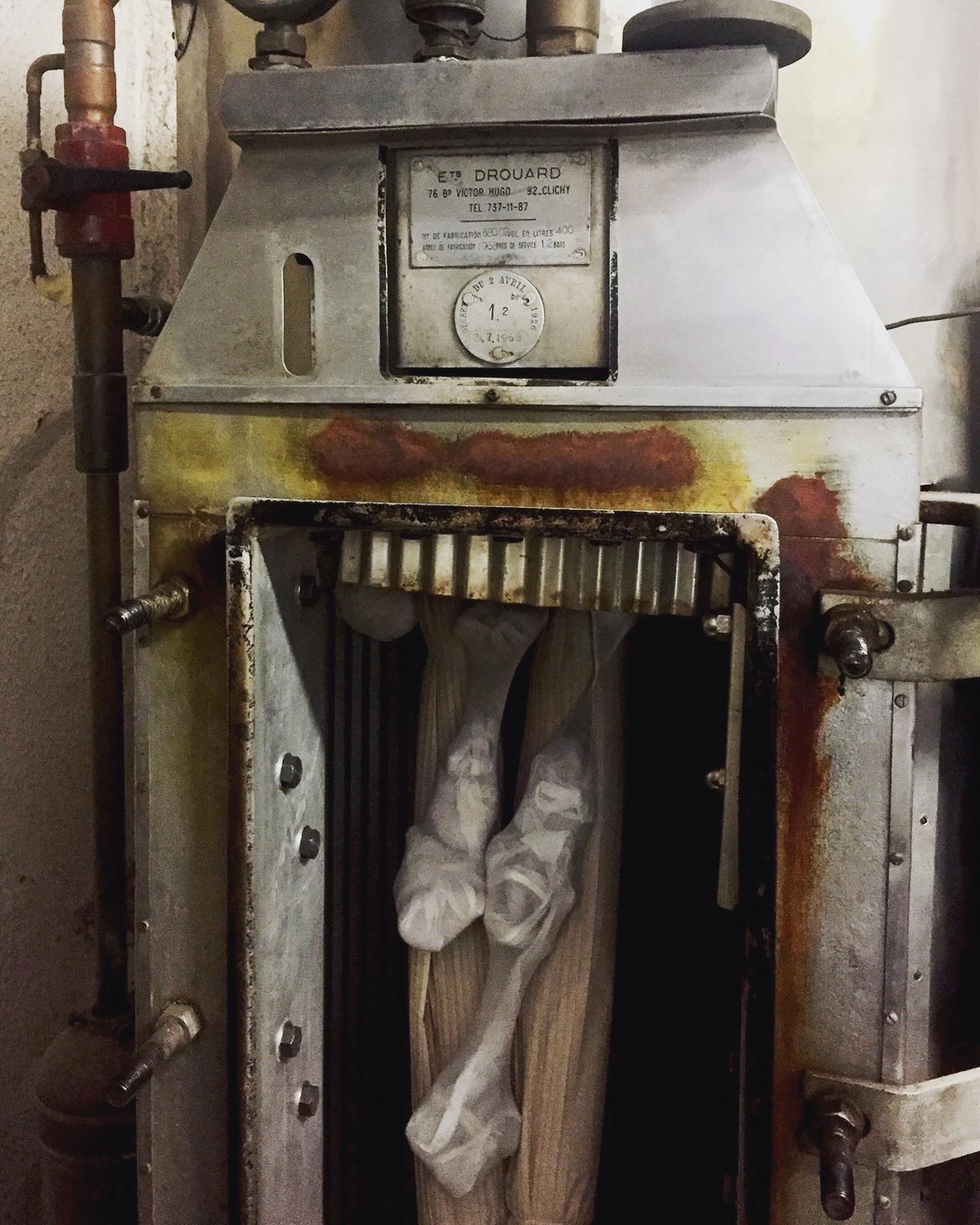


Your linen or cotton pieces are beautiful as well. I love the cut of your jackets. Do you make the patterns yourself?
No, our seamstress does that. We design the pieces, work with her, adjust the cuts together. It requires good understanding and communication. When someone else makes the pattern for you, you have to deal with a part of interpretation and personal tastes. For the jackets, for example, she tended to adjust a lot. On the contrary, we wanted them oversize and unisex. It was a real challenge to make unisex pieces.

We could continue to follow our own rhythm, but it would end up becoming a bit loose. In the end, following this calendar gives us structure and a pace.
Finding a production workshop is often a big challenge for young designers. How did it work for you?
It was quite complicated to find someone that was okay to work with us. In the beginning we were looking for an independent seamstress or a production workshop. Seamstresses that we contacted didn’t want to work for brands. It was too much for them. They preferred to work with individuals, making creations, ajustements, things like that. On the contrary, for factories, we were too small, we didn’t want to make enough quantities. We wanted to work on demand and the factories asked for a minimum of ten pieces in the same fabric to start a production. They didn’t want us to come every month to make one or two pieces. Which we can understand. So, we had a lot of refusals.
We ended up putting flyers in fashion schools in Marseille and we met Pauline, our seamstress. She had come back from London, where she had spent seven years, to settle back in Marseille. She had the project to start a production workshop and work with sustainable brands. She liked our project from the start.
Even if she’s bigger now, she stays very flexible with us because we were there from the start. We are lucky to have found someone with whom we can make small productions and more sporadic projects at the same time.
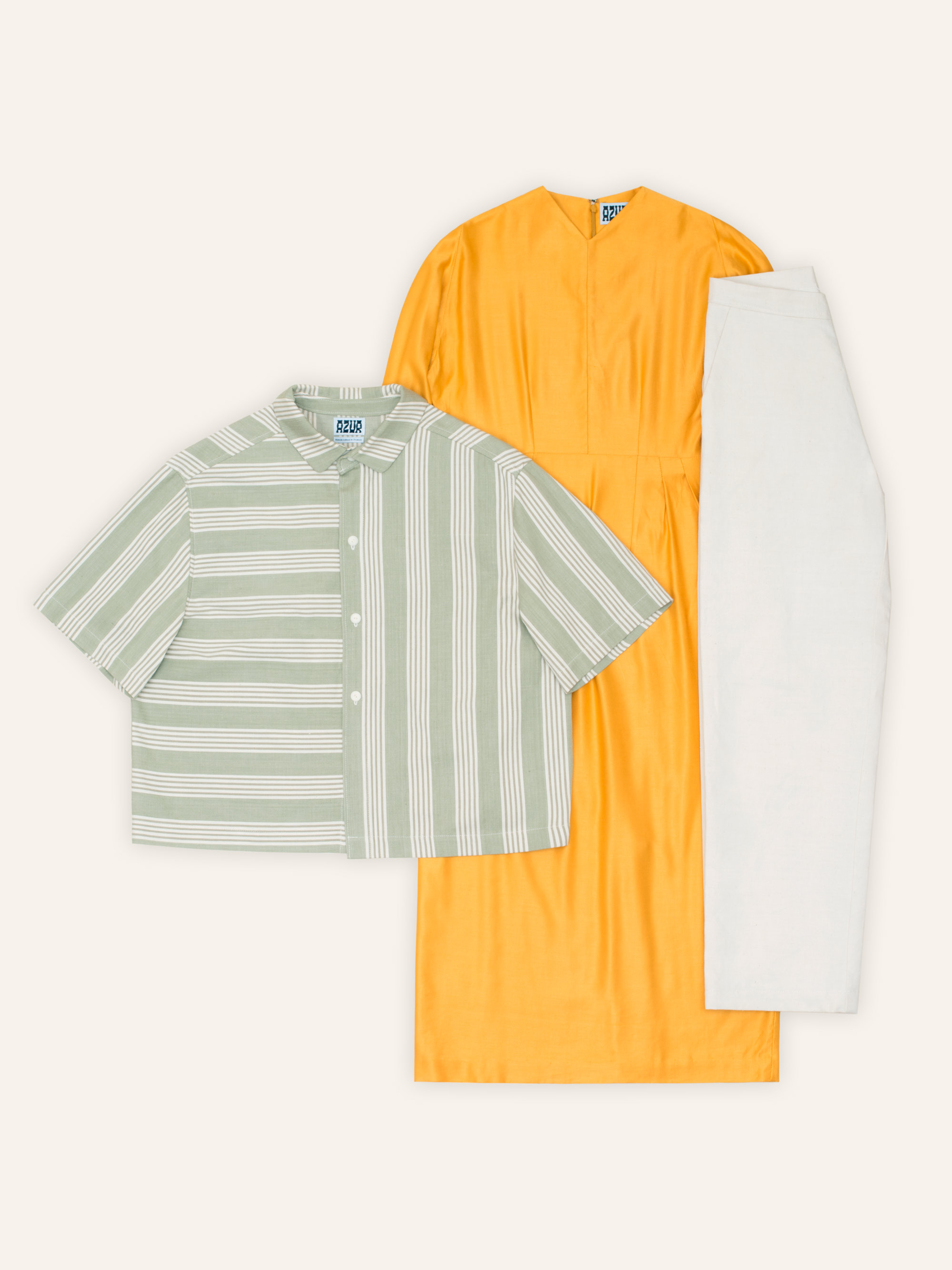
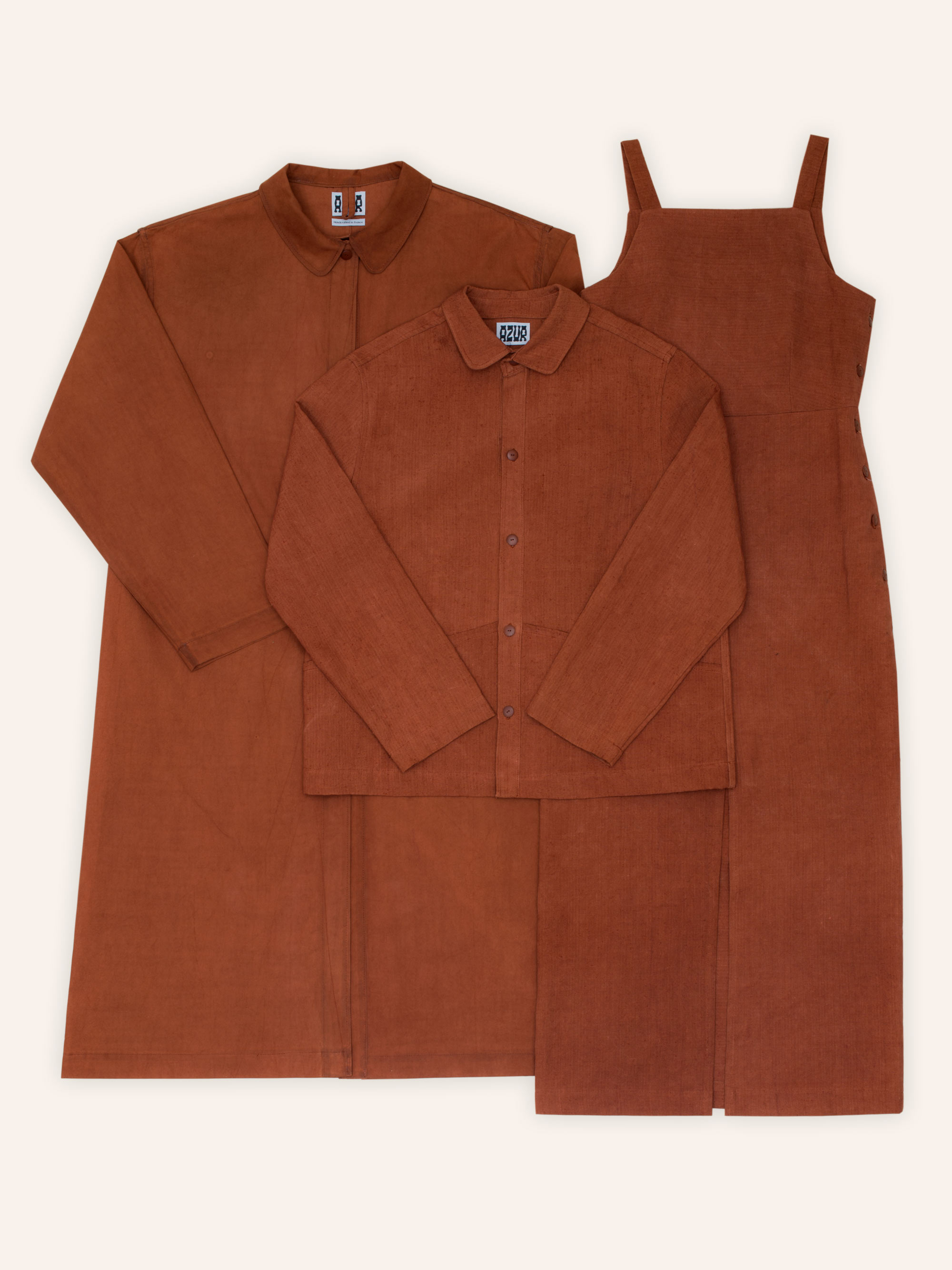
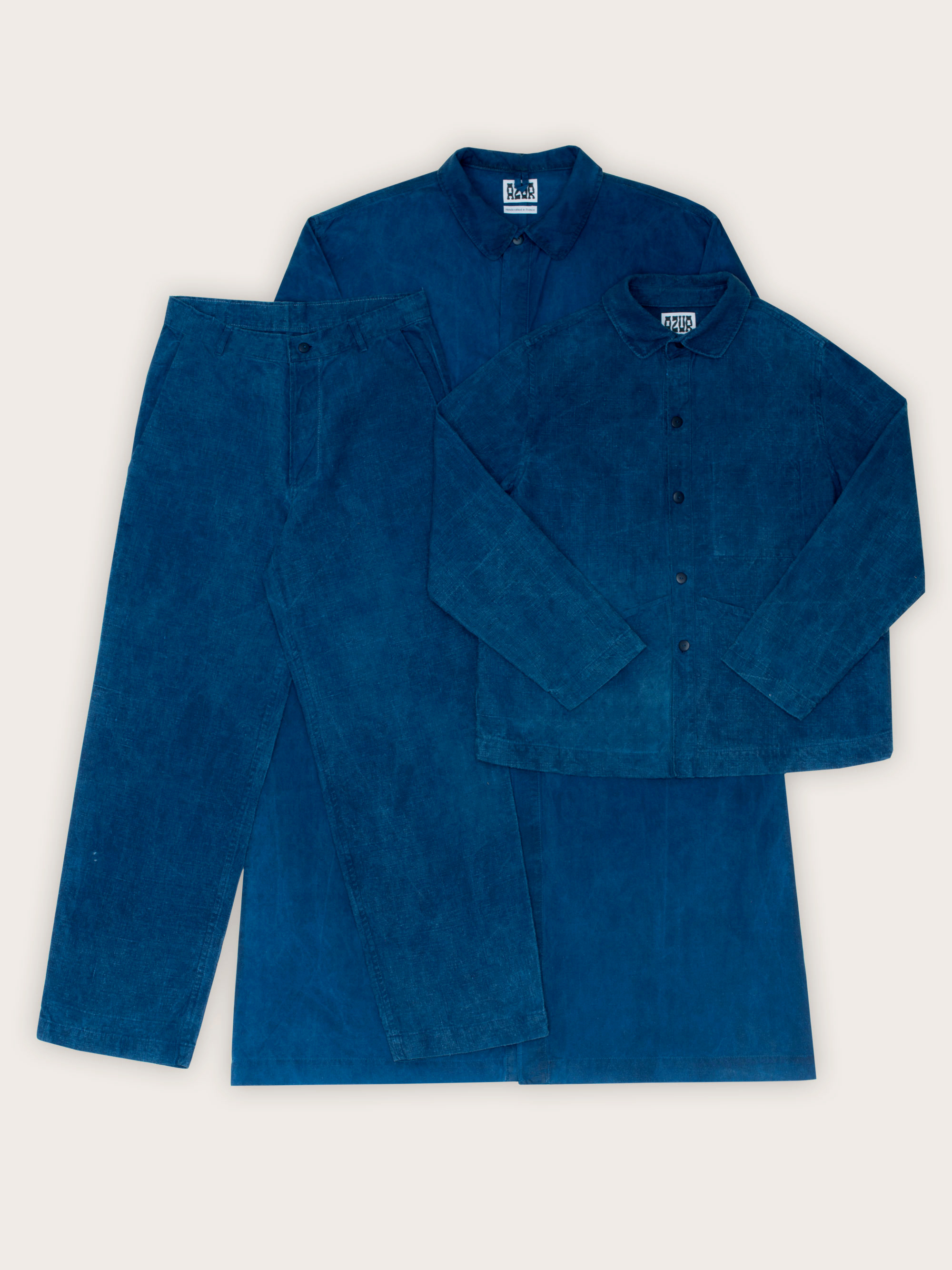
How many collections per year do you release?
Until now, we have always worked by collection, but without respecting any calendar, following our own rhythm, as it came, even if it was taking more time. So, there was always a gap between us and the official fashion calendar. The time it was taking us to work on a summer collection, for example, to produce the pieces, shoot them and put them online, we were already at the end of July. A true summer collection is released in April or May. Our pieces are quite timeless, so we didn’t care too much. But now, we are starting wholesale so we have to synchronize with the fashion calendar.
(« Wholesale » means selling in shops that aren’t your own shop or e-shop)
In the beginning of September, we made a new collection for summer 2022. We shot it already and we are presenting it to stores that are buying summer 2022 now.
Entering this wholesale system, forces us to come back into this calendar and synchronize twice a year. What is done is done already and can be published on our own website in spring 2022. It allows us to anticipate.
As I was saying before, we are in a phase where we are looking for optimization, for making our work viable and more structured. We could continue to follow our own rhythm, but it would end up becoming a bit loose. In the end, following this calendar gives us structure and a pace.

Did the stores contact you and or was it the opposite?
We started wanting to seek out stores for selling our products early 2020. We had decided to participate in a showroom in Paris. We were in contact with an agent that would have presented our collection to buyers. But it didn’t happen, because it was right when COVID-19 started. Looking back, it isn’t a bad thing, we surely weren’t ready at the time. We hadn’t focused on the pleated silk yet and I think this is our thing for wholesale. But definitely, it was something that we had in mind.
Last summer, shops contacted us to ask if we were doing wholesale. So, it all started like that this summer. We sent pieces to a first shop, and then some others contacted us.
I saw that you were sold in a shop in Brooklyn?
Yes, Tangerine. The store owner has her own swimsuits brand, it’s called Nu Swim and it’s made in recycled polyester. She sells her own brand and a selection of others. We made a small production for her. And during summer, another shop followed, also in Brooklyn, Sincerely Tommy, and another in Japan. It came to us almost naturally. And of course it accelerated the process and forced us to think about the model, how to put this in place.
It sounds super fluid, natural, it is inspiring the way you develop.
It’s true that it came at the right time. At the moment we were looking for that.
We don’t have a local public anyway. It’s more people visiting Marseille for the weekend or on holidays.
Do you also sell in the showroom of your studio space?
At the beginning, we weren’t necessarily looking for a studio with a selling corner, but simply for a studio space. As it is a commercial street that the city is trying to bring dynamism to, our landlord asked us to set up a small commercial space as well. We made a deal with him, so we created a little showroom inside our studio. It’s not really a shop though. We don’t have fixed opening hours, it’s our working hours. So the visits on appointments system works better. We don’t have a local public anyway. It’s more people visiting Marseille for the weekend or on holidays. They will write to us to meet.
At the same time, it opens a window on your working space.
It is something we would love to develop. Organize studio visits for example. People are curious about the process, the natural dying, etc.
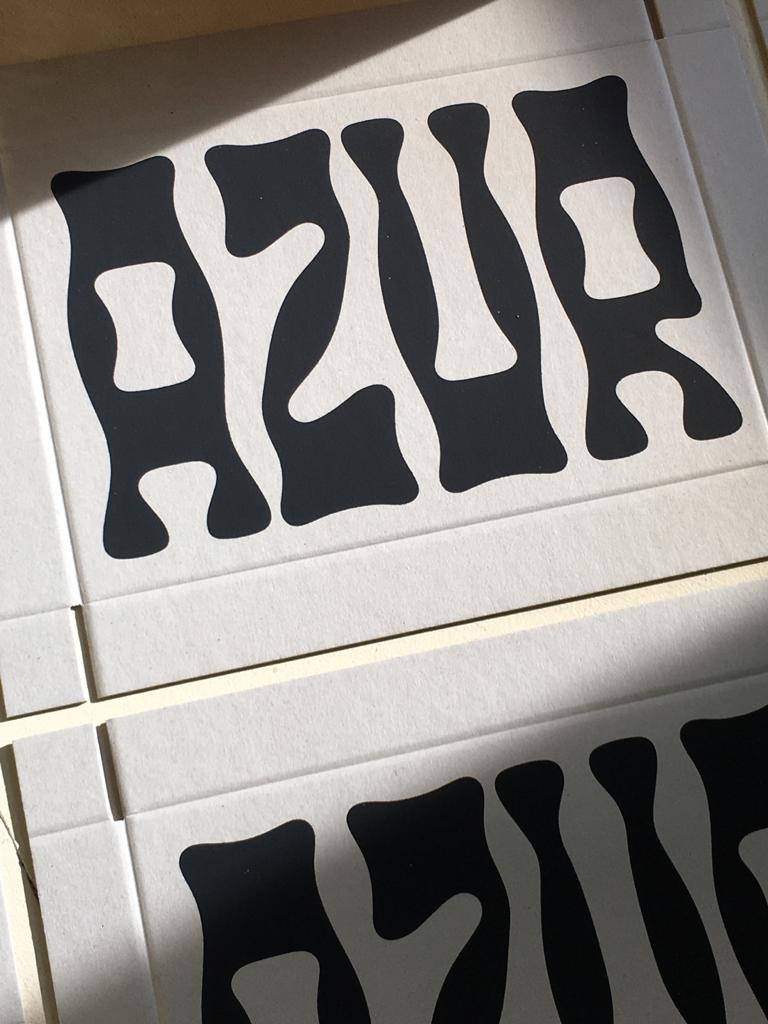
Yes, I imagine. Even more when you are using these beautiful specific techniques like dying or pleating. What are you working on at the moment?
We just finished the next spring collection, the one we are going to present for wholesale.
We want to continue researching around pleated silk but also to reopen to other things. We would like to develop accessories like belts, and maybe to work with metal workers, integrate other materials, other crafts but still relate them to pleated silk. We would like to explore prints, because with natural dyes, you don’t necessarily have to make plain colors. We have lists of ideas but we can’t go that fast, we also have to deal with the rest. We are re-organizing the base and then we will come and pick up our ideas to integrate them little by little. For two people, it is already a lot of work.
[…] for now, we keep little freelance jobs on the side. We make dyes for a friend, for her table linen brand for example. But it stays in our field and competencies, in what we have set up as a business.
Do you plan on hiring someone soon?
We have had interns, and we clicked with one of them, Madeleine. We are going to hire her, part-time, for six months, with a subsidized contract. As we are not paying ourselves yet, we can’t hire someone on the long term. She is good at sewing and will be able to help us with that. It is very helpful to have someone at the studio to test things directly. When you don’t sew yourself, it is hard sometimes to realize if an idea is realistic or not.

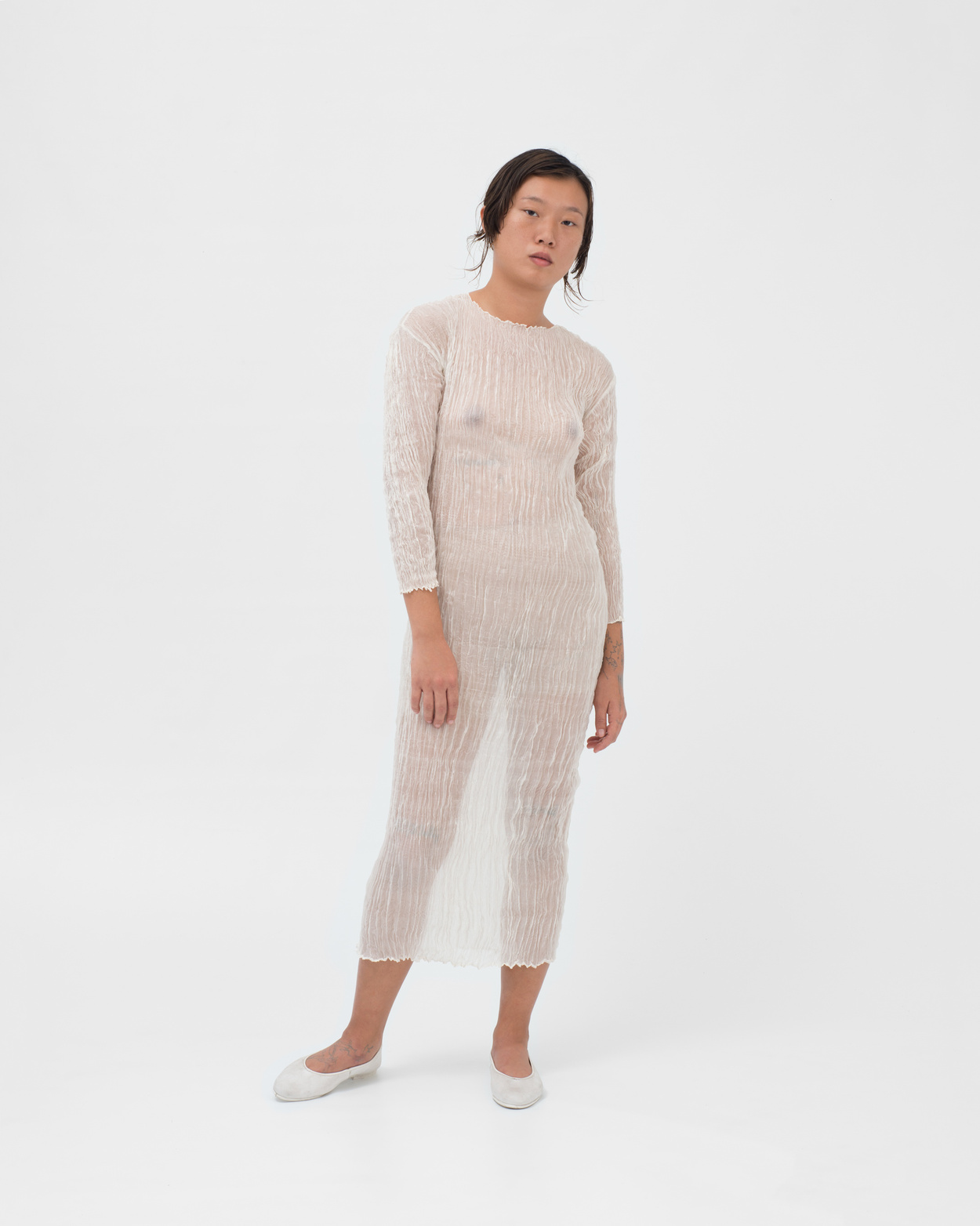
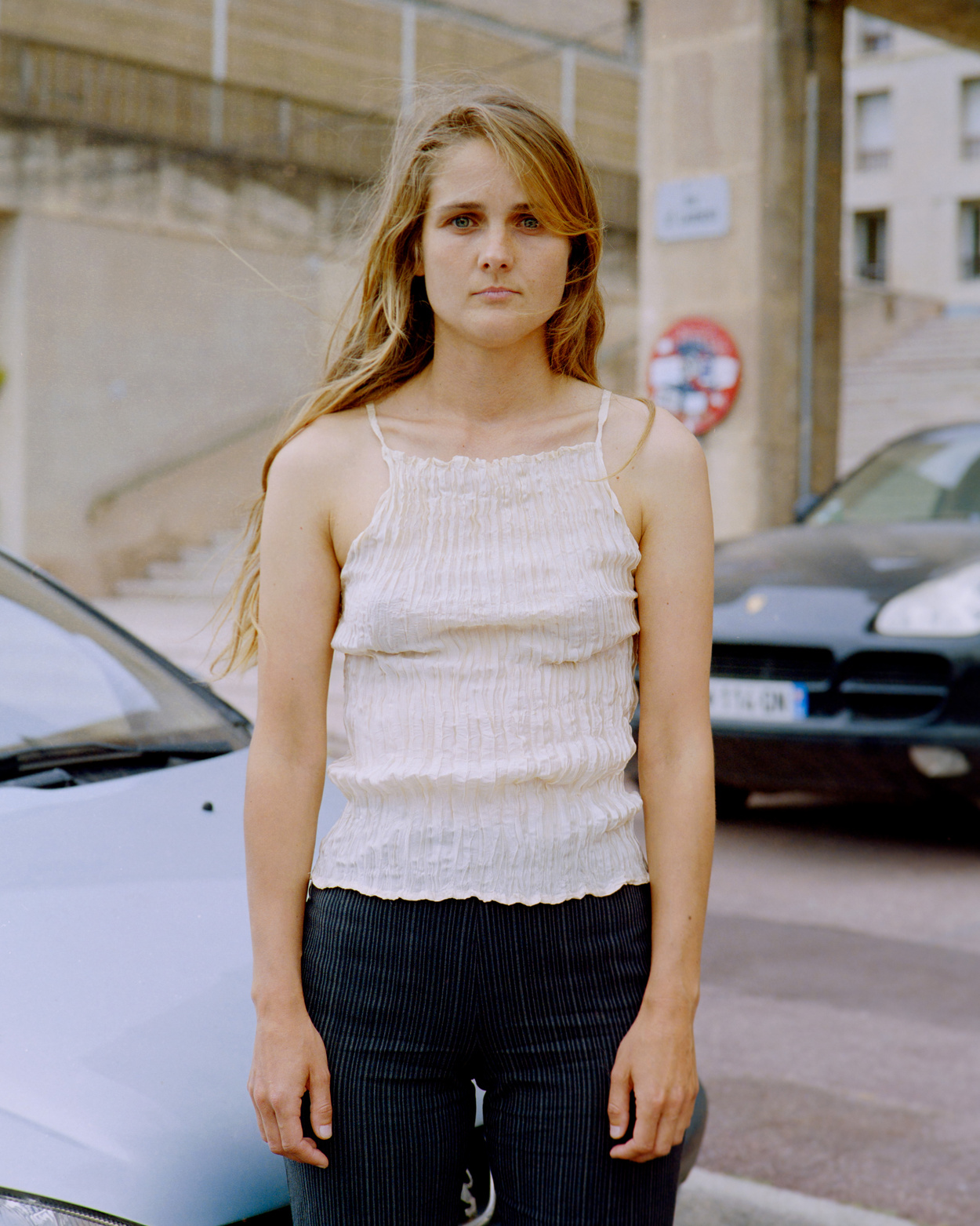
Is Azur a viable business or do you have to keep side-jobs?
The project auto-finances itself. We can continue to produce, but we don’t pay ourselves yet. When we were independent, a sale would mean money for us directly. Now the structure is heavier, we are an Sàrl. So the day we want to get a salary, it’s going to be two real salaries and the state will take a percentage on it.
So yes, for now, we keep little freelance jobs on the side. We make dyes for a friend, for her table linen brand for example. But it stays in our field and competencies, in what we have set up as a business.
This is also the goal with the wholesale : to calculate how many pieces we would have to sell per year to reach stability and be able to pay ourselves.
In the classical vision of brand development, you are taught that from day one, you have to follow the fashion calendar, to seek out shops that will sell your products, to enter the wholesale system if you want to exist. But you started with a completely different system (on-demand/pre-order) and evolved naturally. It is inspiring and appears somehow more doable and a more appealing way to start.
It’s true, maybe it was a bit naive, but we really wanted to do it this way. We didn’t want to do a business plan and then, at some point, reality hits you back. When we started wholesale this summer, we had to press pause, re-evaluate the prices, the margins, the costs of each and every thing. To ask ourselves those questions : how many pieces per year do we have to sell to make a living? Is that realistic? As we have quite an artisanal process with dyes, producing more also means more work for us directly.
We wanted to decentralize too. It was a personal choice, we wanted to live close to the sea and as we were changing life and career, we could as well remodel everything.
This is another part of the job, interesting too. But it is an all different world. We aren’t really taught about that in fashion schools. We are not used to talking about money. Nor to consider it.
Yes completely, and this isn’t necessarily what interests you the most when you come from a creative background. It’s a part of the job that makes you a bit anxious.
Nonetheless, economic viability is one of the three pillars of sustainability. It’s important that clothes are sold, bought, worn. If they are just sleeping on hangers, it’s even worse. Even if they are sustainably made. A lot of texts on sustainable fashion are standing for de-growth, but in the end, making clothes is our job and we need to make a living from it, in order to sustain ourselves.
In the end, it is just clothes and if we were completely following a de-growth model, there would be no reason for us to exist anymore, because a pleated silk dress isn’t useful at all in itself. These are also questions that we ask ourselves. But if we start to think too much about it, we tell ourselves that we should stop doing anything.
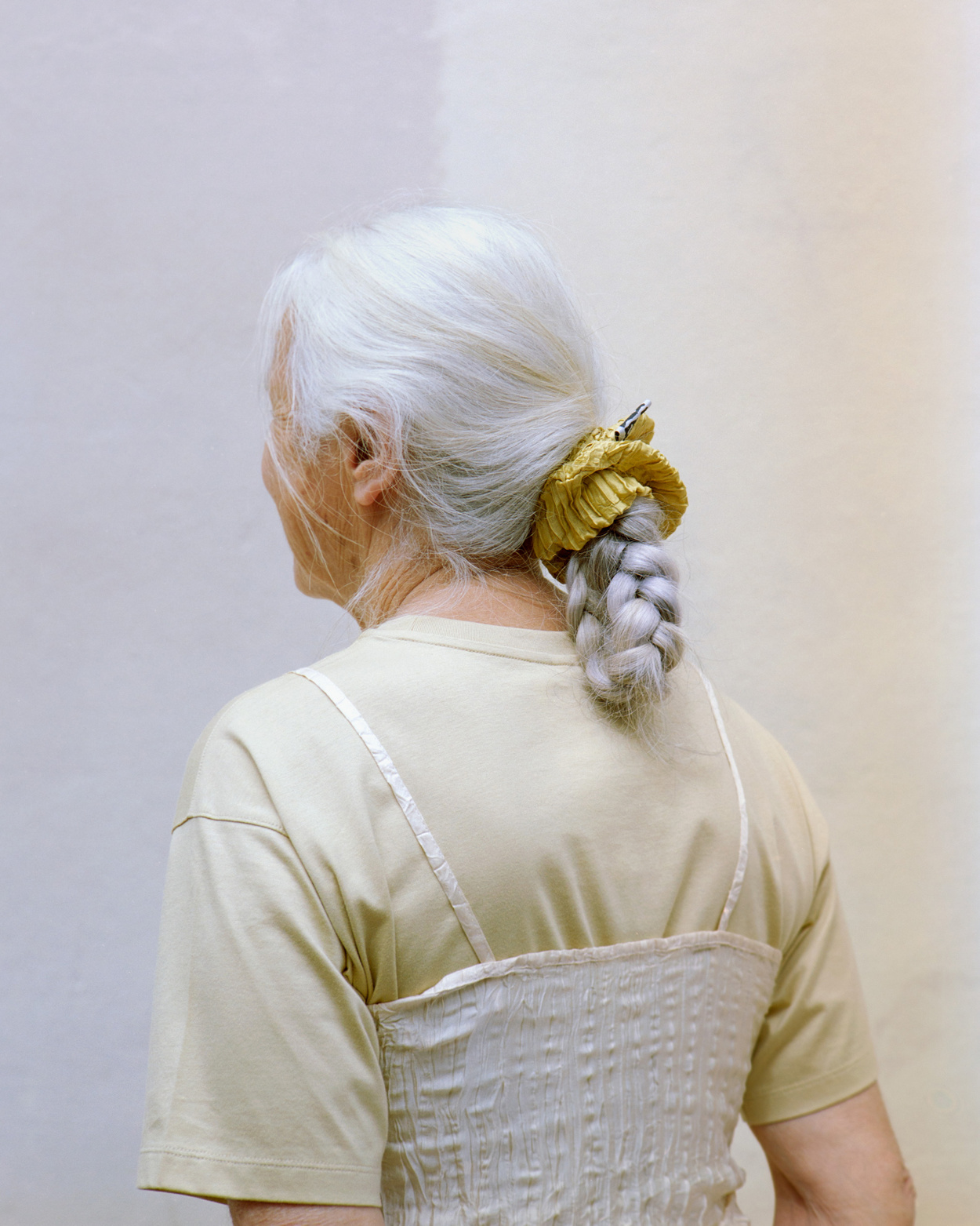


Please do not :-) This is also an industry giving work to people, supporting communities. You make local people work, you value local crafts, it belongs to a cultural heritage, it is important. What is your relationship with Marseille?
Settling in Marseille was more of a life choice. When we started thinking about the project, we were living in Paris but we didn’t want to do it there. We didn’t feel legit, as we didn’t come from the field, to launch one more project in a city buzzing with so many cool ones already. We wanted to decentralize too. It was a personal choice, we wanted to live close to the sea and as we were changing life and career, we could as well remodel everything.
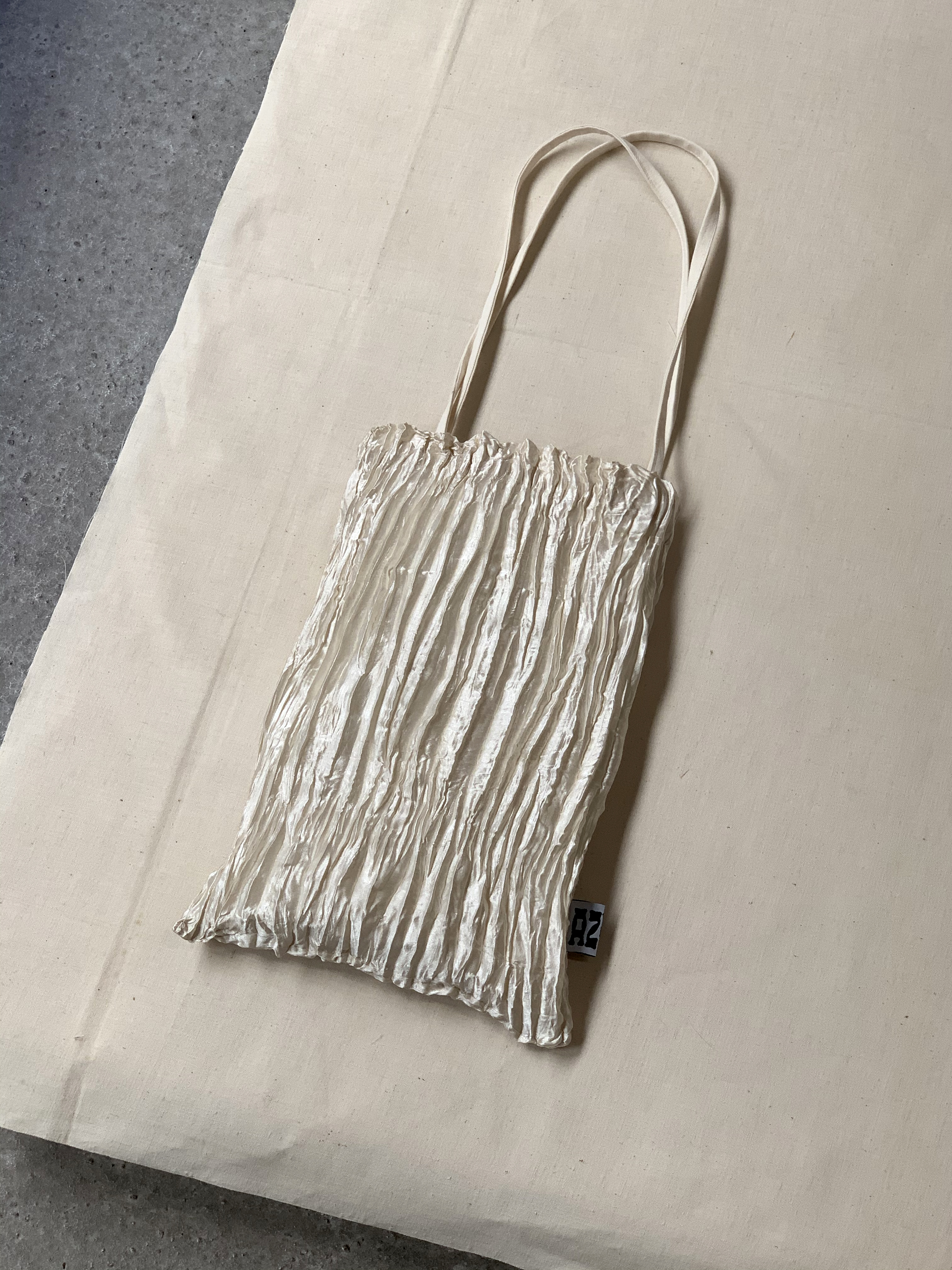
Contact
AZUR
Atelier et Showroom
19 rue du Chevalier Roze
13002 Marseille
France
You can find Azur in New York at Tangerine and Sincerely Tommy, in Tokyo at Maiden and Cabanon, in Seoul at Bas, in Vancouver at Neighbour and of course online.
